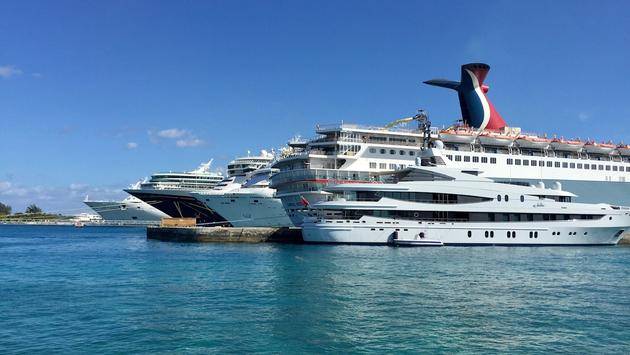Cruise-goers and industry stakeholders have endured a waiting game since cruising stopped in March of last year, with r estart dates being pushed back further and further amid COVID-19.

On Wednesday, the world’s second-busiest cruise port announced when it believes cruising will finally be able to resume.
At a January 27 port authority meeting, Port Canaveral commissioners approved a revised budget, which assumes that passenger cruise-ship operations won’t resume until at least July.
Several major cruise lines at the Florida port have already voluntarily canceled their sailings for the next few months—Carnival, Norwegian and Royal Caribbean have postponed sailing until May, and Disney won’t restart until at least April, Florida Today reported.
When the port’s original 2020-21 budget was prepared last summer, officials were anticipating that one ship from each of the port’s four major cruise lines would begin sailing again by January 2021. Port officials are now forecasting that only a single ship from four lines will be sailing again by July and, even then, only at half capacity.
Port CEO Captain John Murray. “We have a new administration. The cruise lines themselves have kicked everything down the road for three months already, or at least through March and April. The reality given the pandemic right now, until those numbers start coming down, we just don’t see that this industry is going to get any attention that it needs to get restarted.”
Port Canaveral’s updated projections have been made based on a worst-case scenario and there is data that suggests ships may start sailing before July. Murray emphasized that the port’s projections are based solely on its own estimates, not any cruise line statements. They factor in the work that cruise lines must do in order to comply with the CDC’s new ‘ Framework for Conditional Sailing ’, which replaced its previous ‘No-Sail Order’ in October 2020. According to the Orlando Sentinel , that framework includes 74 safety points that carriers will need to incorporate in order to mitigate the threat of COVID-19.
“The CDC’s motivation right now to put the cruise lines back on the water is not there, and probably won’t be there for the next three months,” Murray said. “So rather than look at this entire operation and say, ‘Well, let’s just kick the can to April and then we’ll look at it again,’ it doesn’t make any sense to keep coming back to you guys with a rosy picture that we’re going to start in April or May and then say, ‘Whoop, that didn’t happen.’ So, we took the very hard approach of, like I say, ripping off the Band-Aid, and making it a bad situation for the port just to show you that we have a plan to get through this if it does go as far as the fourth quarter.”
For the 2020-21 fiscal year, the port’s new estimate predicts an overall loss of $43.12 million—that’s $6 million more in losses than was initially projected in the first version of its budget, which was submitted last August.
The port’s fiscal year ends September 30, which means cruise business will have only contributed for a single quarter if it resumes in July. Its 2019-2020 fiscal year already suffered massive losses when cruising was halted in mid-March, due to the pandemic.
